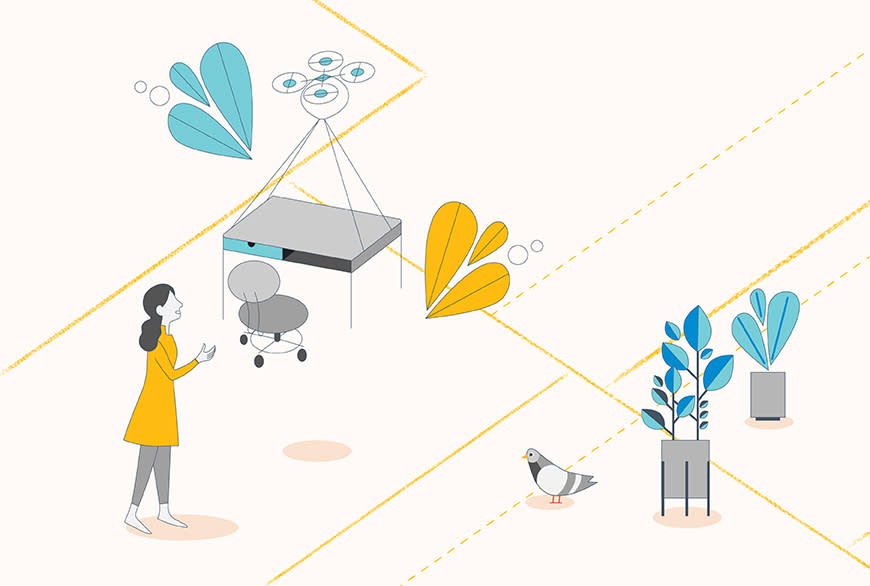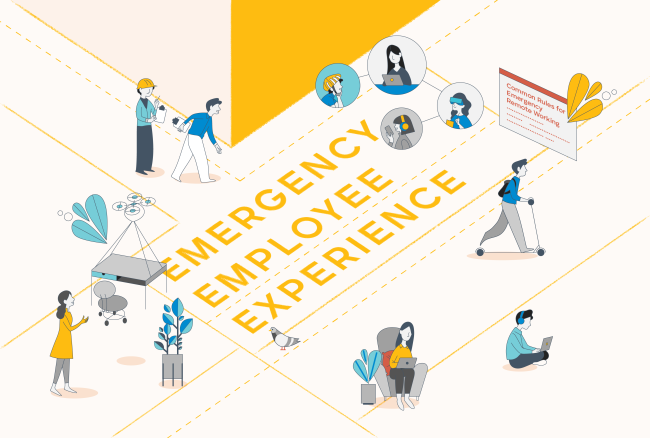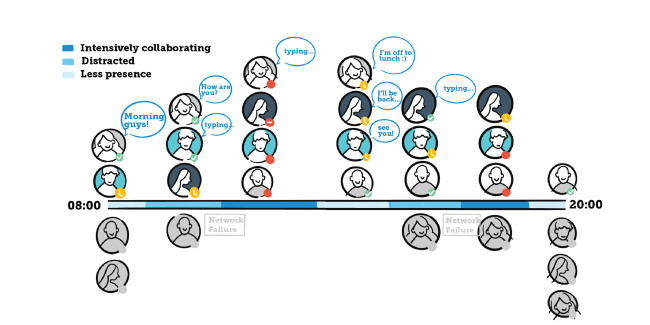
In the first installment of this two-part series on emergency-proof employee experience (EEE), we talked about building the proper mindset for creating an EEE. In this post we look at the necessary components of designing a holistic new experience. In this new world, you’ll need to reconfigure your employees’ roles and responsibilities, workspaces, tech systems, and even daily work rituals. Consider the following.
Repurpose Roles, Rethink Responsibilities
A culture of preparedness requires effective responses at all levels. All employees should be ready to react and equipped with the knowledge and confidence on how they can continue to provide value, even if they need to step into different roles or work differently in their current role. Exploring emergency scenarios and defining options for how roles can pivot during a crisis can help avoid the idleness of employees whose jobs aren’t conducive to working from home. Such work isn’t just in the interest of productivity; it’s also a way to ensure that all employees feel like they have a purpose and are needed during these emergencies.
A culture of preparedness requires effective responses at all levels.
In China, Alibaba and JD.com came up with a talent-sharing plan to hire short-term staff from sectors temporarily affected by the outbreak (such as closed restaurants, bars, shops) for flexible job openings in e-commerce and supermarkets. Adopting a more horizontal approach to skills and responsibilities for all employees, as well as establishing a culture of shared priorities, independent decision-making, and accountability could make a temporary role reinvention more immediately feasible if needed. It could also be beneficial for daily operations, as it would broaden individual perspectives and create a more empowered workforce.
What about those who can work remotely? (It’s worth noting that the overwhelming majority of EPAM’s workforce is currently remote by design.) Building scenarios and testing solutions can help prepare for the ramifications of a fully remote workforce. Companies can draw from existing research, practices and case studies exploring what happens when remote working is the norm, like in the case of InVision’s 100% remote but culturally cohesive employees or Toggl’s simple and fun test to understand the practical needs and individual preferences of their distributed collaborators.
Imagine involving teams in the ideation of new practices of collaboration, or even new team configurations depending on location (think of colleagues living close to each other), to be ready and onboard when the situation requires it.
The Best Possible Workspace
Not everyone can find an ideal workspace at home. Even for those that have a chair and desk, there’s most likely room for improvement. In order to maintain good performance levels and positive employee engagement, remote working needs to be thoughtfully designed. WordPress, with no headquarters and a distributed workforce, allocates a budget for each employee to design their own home workspace that works for them: from a monitor to an ergonomic chair to the right headset, everyone can create their ideal space at home, or find one at, say, a co-working space. It’s essential to provide employees with the necessary tools and resources to make the most of their remote working situation.
In order to maintain good performance levels and positive employee engagement, remote working needs to be thoughtfully designed.
As we anticipate emergencies becoming a bigger part of our futures, we need to imagine new solutions based on individual needs and for any context, including spaces (and platforms) that adapt to unexpected situations, with flexible systems and real-time processes, priorities, and settings for each employee. Almost like an office that can be disassembled and taken with you, wherever you may need to go.
Tech that Works for Remote Employees
Tools and technology keep work going, even during emergency scenarios. But when relying on employees’ own “home” tech, it’s important to be realistic about the challenges this can pose when tech doesn’t do its part. For this reason, continuous testing is very important. Before adopting a new tool, it’s essential to understand if and how it can be used during emergency scenarios, when there is a possibility of reduced access to the latest technology.
At the same time, even if technology does enable people to work from anywhere, companies should also think carefully about how to empower their employees to manage their lives in a sustainable way. Work-life balance has probably never been more challenging than it is right now as one third of the world’s population is under some form of coronavirus lockdown. In times like these, organizations need to think through how they assess performance while being mindful that life is anything but business-as-usual.
Preserve the Intangible as Much as the Tangible
Emotional needs are just as important as functional ones; even more so in times of crisis. What happens when all the intangible reasons to go into work every morning—social exchange, team building, rituals and routines—suddenly disappear?
Distributed work platform Sococo has an idea here: their concept centers around online workplaces as counterparts to real-life ones, including rec rooms for virtual coffee breaks.
The coronavirus is not our first emergency, and it won't be our last.
Think about creating intangible rituals in new normal situations – a recipe to follow during the day. The starting point can be as easy as experimenting with existing peer-to-peer practices to make remote work feel more inclusive and social.
Another key aspect to be planned and tested: Mental wellbeing support, ranging from managing the fear caused by emergency situations to the possible feelings of anxiety, isolation, and loneliness due to prolonged periods of absence of face-to-face contact. Imagine exploring possible solutions of “gathering moments” or dedicated support, either one-to-one or collectively, with experts or just among peers.
The coronavirus is not our first emergency, and it won't be our last. Use this post as a guide as you start to design your own EEE and prepare your people, and yourself, for the uncertain future.
Image by Shumeng Tan





